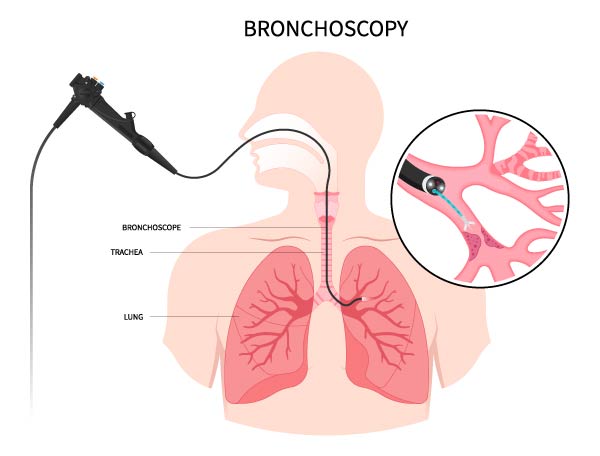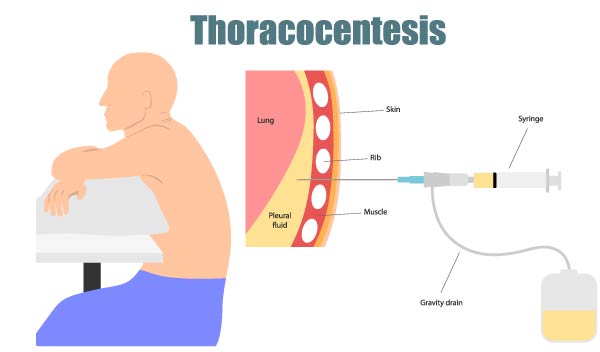Advanced Procedures
The skilled pulmonologists of Respiratory Specialists provide numerous advanced procedures to diagnose patients with lung disease. Patients who are found to have an abnormal CT scan or chest X-ray may require simple monitoring or additional investigations. If a diagnostic procedure is recommended, it may include the following:
Conventional Bronchoscopy
This procedure is used to diagnosed many forms of lung disease, including pneuomonia, inflammatory lung disease and lung cancer.
- Conventional Bronchoscopy - from the American College of Chest Physicians

Endoscopic Ultrasound Guided Bronchoscopy (EBUS)
The EBUS procedure uses the most advanced ultrasound techniques, through the bronchoscope, to identify and biopsy abnormal, enlarged lymph nodes in the chest. The EBUS procedure can be combined with conventional bronchoscopy or more advanced, robotic assisted bronchoscopy techniques, if needed.
- Endoscopic Ultrasound Guided Bronchoscopy - from the American College of Chest Physicians
Minimally Invasive, Robotic Assisted Bronchosocpy Using the Ion Platform
This type of bronchoscopy uses navigational technology to biopsy lung nodules and lung masses. The Ion bronchoscopy procedure enables your pulmonary doctor to diagnose or exclude lung cancer or other causes of lung nodules or lung masses. This technique provides the greatest accuracy available, enabling your pulmonary doctor to sample even small or difficult to reach lung nodules.
- Thoracentesis Biopsy - from the American College of Chest Physicians
Thoracentesis
This procedure allows your pulmonary doctor to drain fluid from the chest cavity, or the pleural space, where fluid may accumulate outside of the lung. Your pulmonary doctor will use ultrasound guidance. This is a minimally invasive, outpatient procedure that is used by your pulmonary doctor to help relieve shortness of breath and diagnose infection, heart failure, inflammation, cancer or other forms of lung disease.
- Thoracentesis - from the American Thoracic Society



